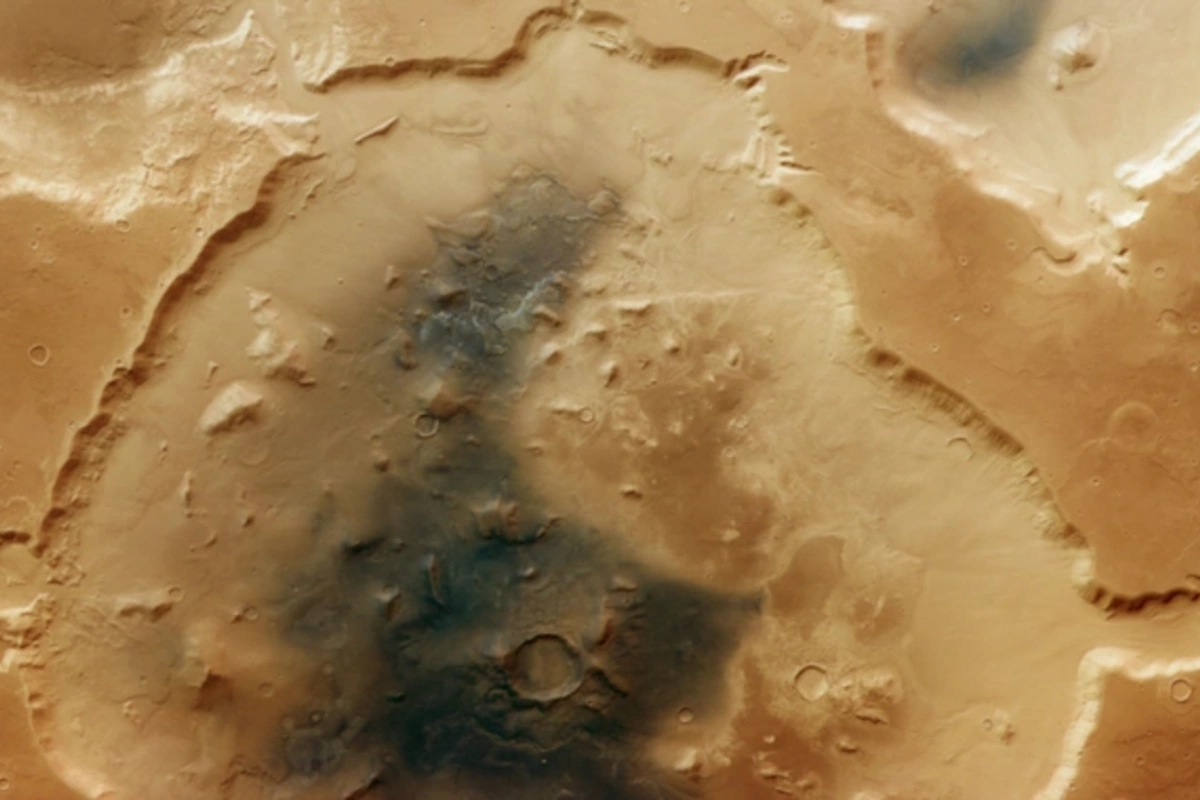28 May , 15:23
0

European spacecraft Mars Express captured a unique Martian crater - a true geological encyclopedia of the Red Planet
The orbital probe transmitted detailed images of the Deuteronilus Cavus crater, based on which scientists created an impressive three-dimensional model. This amazing area of the Martian surface represents a true natural museum - here in a limited territory, traces of glaciers, ancient water flows, volcanic activity, dust deposits, and even the famous Martian table mountains are simultaneously present.
As reported by TUT.AZ with reference to Lifehacker, the age of the crater is between 3.7 and 4.1 billion years, and during this time it has undergone enormous changes under the influence of water and ice. Its diameter has almost doubled, and the surrounding plain has a clear volcanic origin. The modern appearance of this part of Mars resembles a complex mosaic of diverse rocks and relief forms.
On the inner walls of the crater, characteristic ice tongues with stone covering - so-called debris aprons - are clearly visible. On one side, a channel is noticeable, which probably once broke through the crater wall, allowing a water flow to pass through. On the opposite side, a rectangular gap yawns in the wall - researchers believe that it was initially formed by water and then expanded by moving glaciers.
The bottom of the crater has preserved dark areas that scientists identify as deposits of volcanic ash and dust. According to specialists, they could have formed during the interaction of eruption products with a temporary body of water that existed in the center of the depression. Shiny deposits resembling a mixture of volcanic ash and clay were also found here - another convincing evidence of the presence of water in the distant past.
The outer part of the crater is also abundant with interesting details. Smaller craters and characteristic wrinkled ridges - traces of solidified lava - are scattered around it. Some areas resemble a "Rocky Road" cake - with chaotically scattered, erosion-resistant blocks, which researchers figuratively compared to pieces of marshmallow in a dessert.
The images obtained by Mars Express and the 3D reconstruction of the crater created on their basis allow scientists to reconstruct the climatic and geological past of this region with unprecedented accuracy. The study of Deuteronilus Cavus provides new evidence that Mars was not always a lifeless desert - once raging water flows and powerful glaciers moved here, which may become a key to understanding the evolution of the entire Red Planet.